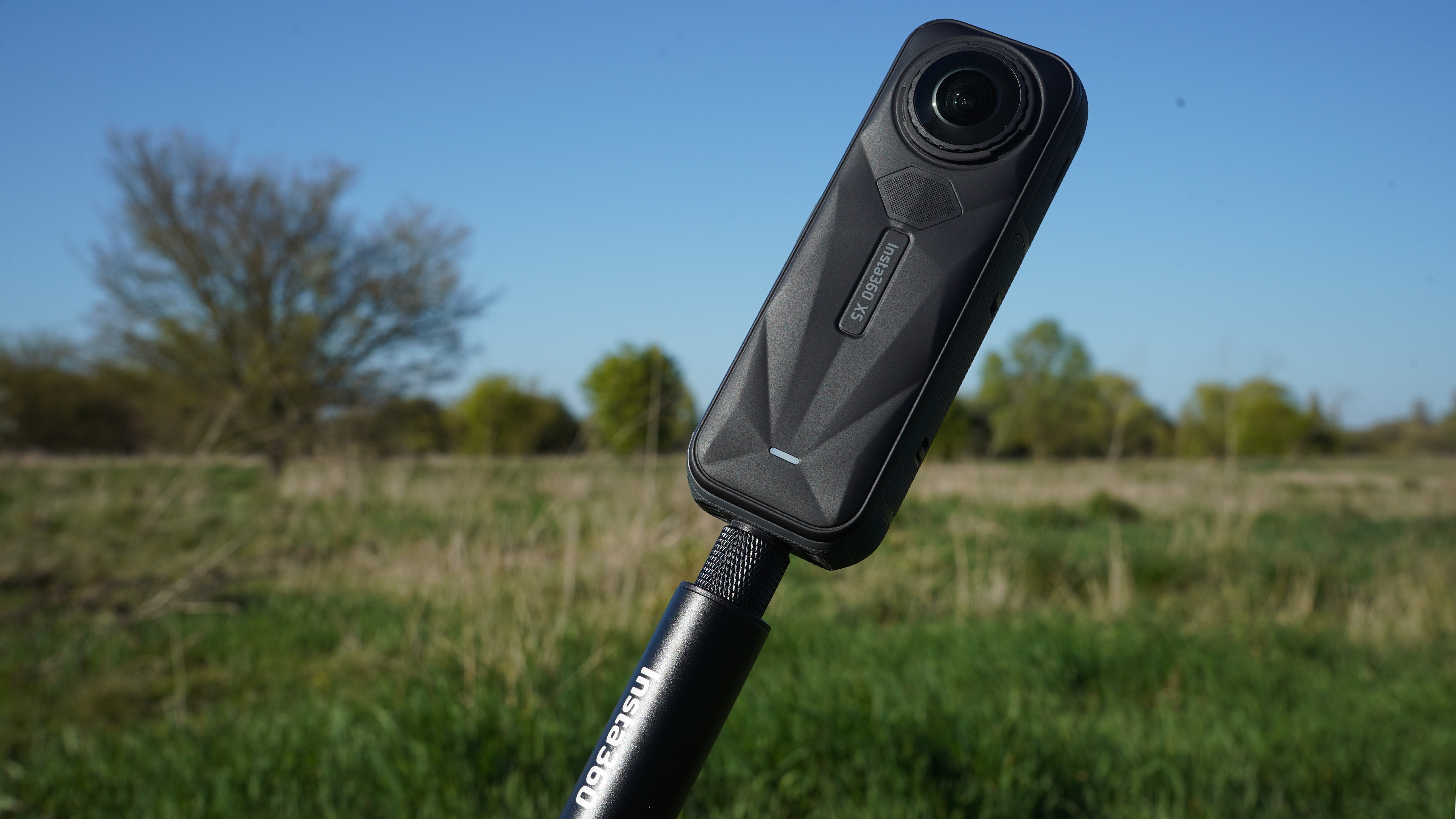
I love this kind of camera, and here's why: A 360-degree camera is one which can see the entire scene from the point the camera is held. Typically that's on the end of a pole which it is able to ignore using AI – so it's called the "invisible selfie stick".
The magic of this is that you don't need to point the camera when you're capturing any action, and – depending on the app – you can either edit the pictures or footage to crop in on part of the scene (yes, point the camera later) or view it using something that lets the viewer click and drag / turn their head and see the entire world.
Insta360 has risen to become the dominant force in 360-degree cameras. We keep hearing that GoPro is working on a new 360-degree action camera, but we've not seen any evidence of it. In that time, though, Insta360 have made three crucial leaps. The X2 then X3 not just matched the resolution of the 'GoPro Max' but brought a back-to-back lens design that more successfully stitches the imagery from two fish-eye lenses. Then last year's X4 brought a higher video resolution – 8K total – as well as a number of other refinements, including removable lens guards. (GoPro are still promising, but has yet to deliver, a newer 360-degree camera.)
The X5, then, is already standing on the shoulders of the best 360-degree camera out there for most people. That leads to two questions – "Is this new version actually any good?" In other words, did something go wrong at Insta360? The second question is more significant for many than it used to be, though, because this is an established technology: "Is the Insta360 X5 worth upgrading to?" As a longstanding personal owner of Insta360 cameras (I had the X3 and have the X4), as well as a review of others, I'll be answering both questions!
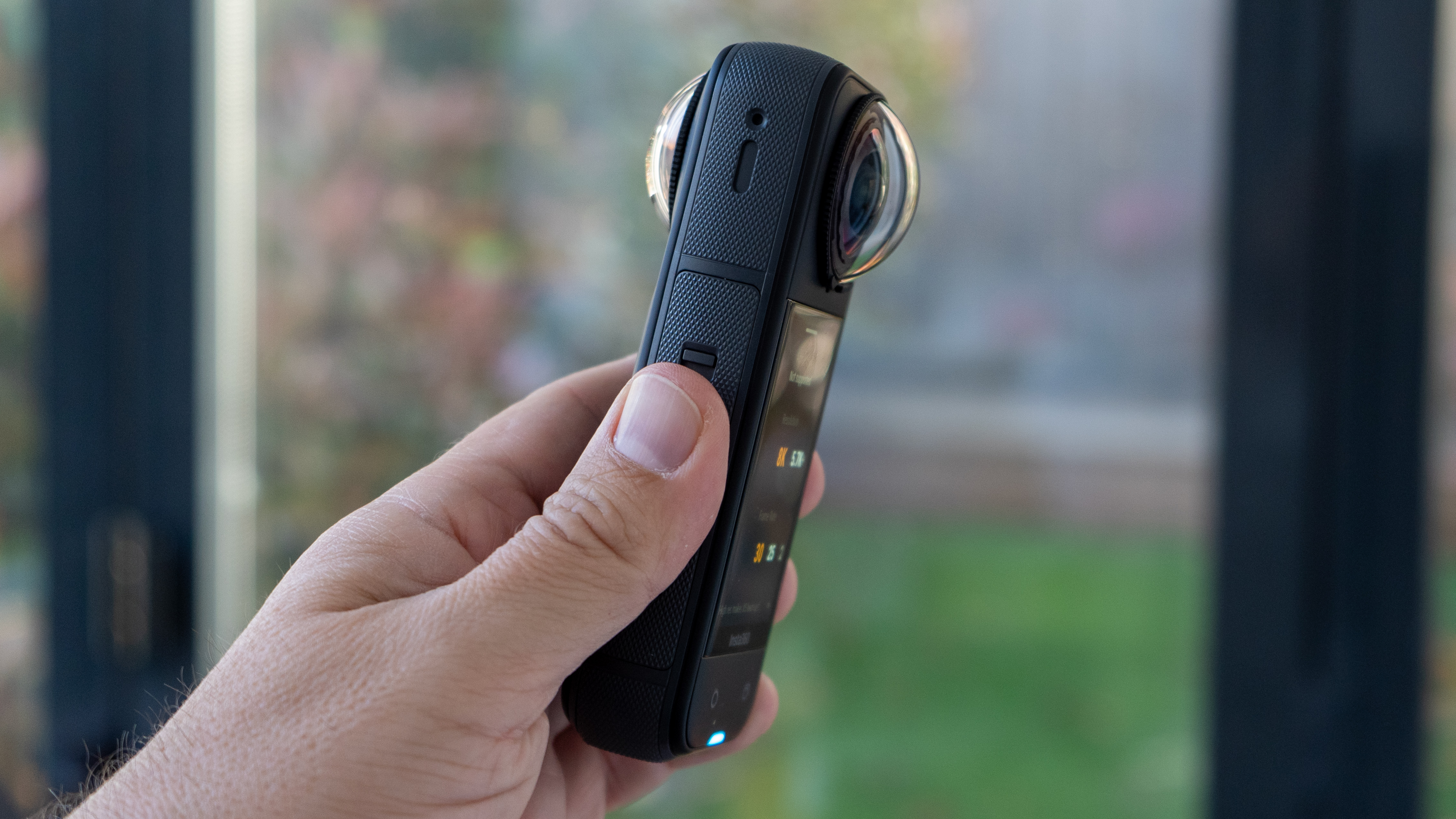
Insta360 X5: Specifications
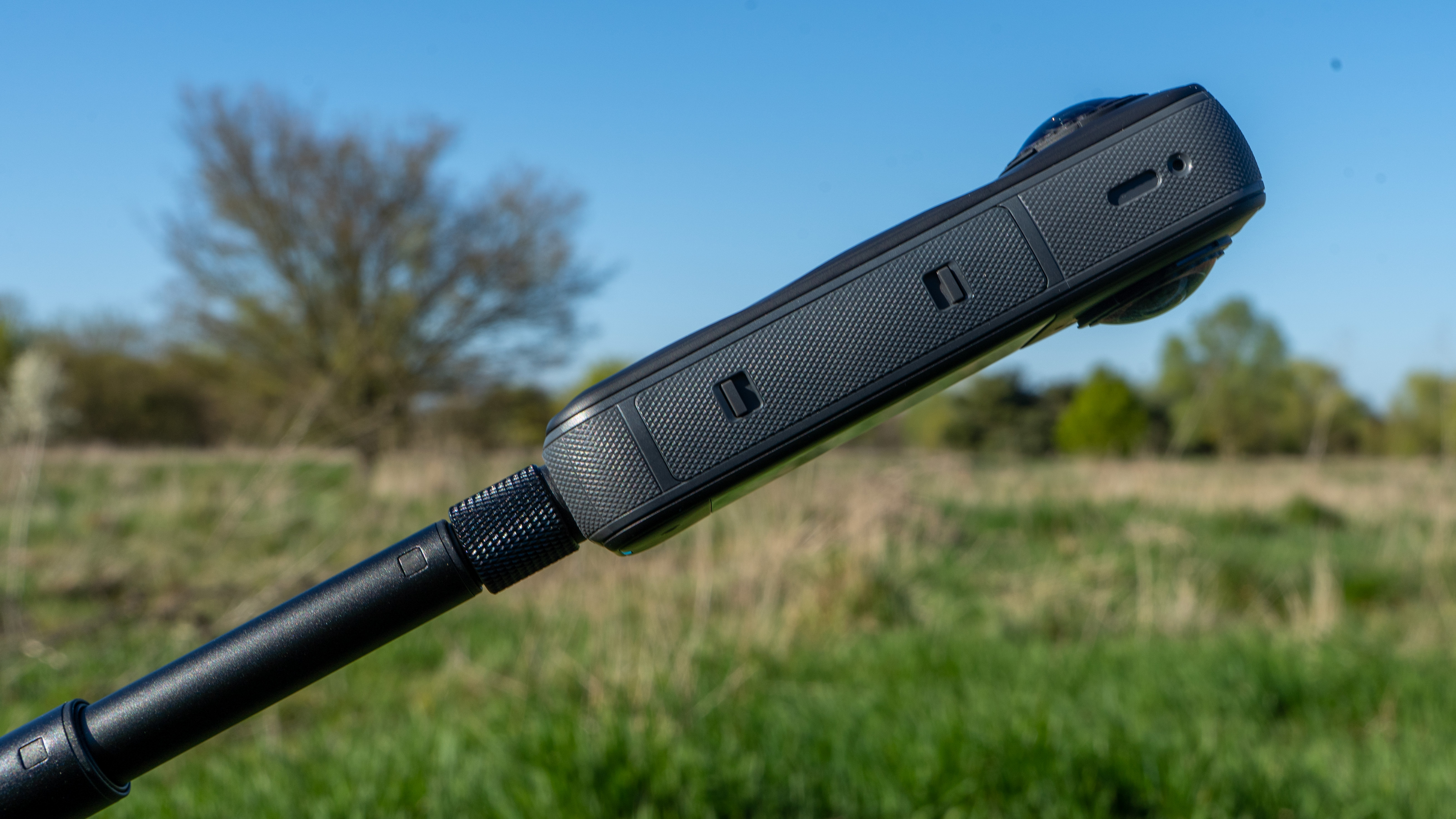
Insta360 X5: Pricing
The Insta 360 X5 comes in at $549.99 / £519.99 / AU$929.99 – that $50 more than its predecessor the X4, which isn't a surprise given the hike in import taxes. There is also an Essentials Bundle including 'Extra Battery, Utility Fast Charge Case, 114cm Invisible Selfie Stick, Standard Lens Guards, Lens Cap, Carry Case' which will set you back $659.99 / £609.99 / AU$1109.99.
The Lens Guards, are $24.99 or Premium versions for $34.99 / £34.99 / AU$63.99, while the new Bullet Time Selfie Stick 2.0 (covered below) is $54.99 / £54.99 / AU$96.99.
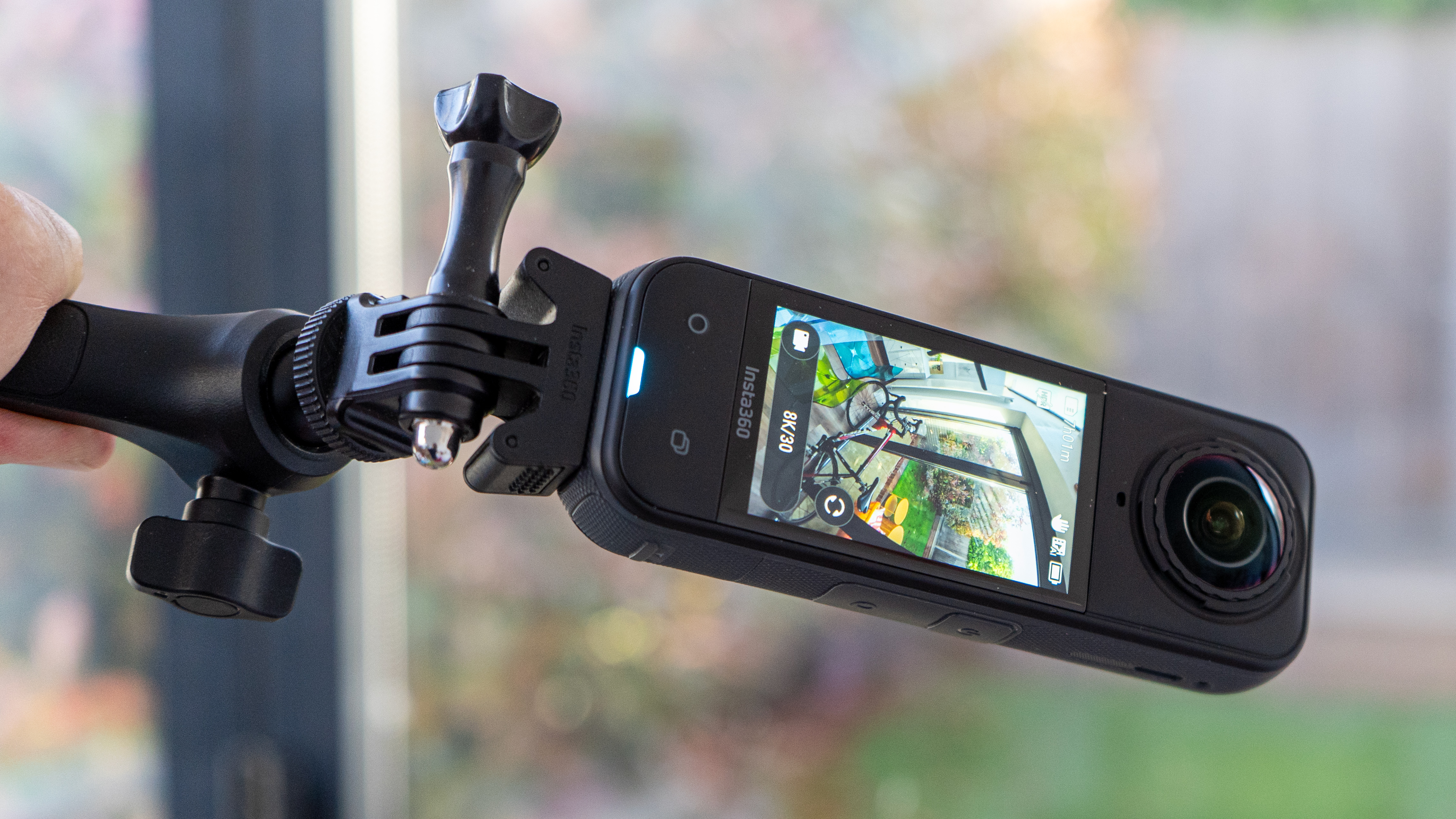
Insta360 X5: Build & Handling
At first glance you see that the Insta360 X5 has gained a cool angular facelift on the 'front' – the side without a screen, which also has a grille for the main microphone in a large irregular hexagon just below the lens. This is multi-layered to reduce noise. The angular design is stylish, and serves to draw attention from the necessarily inelegant fixing points around the lens where you can attach and remove the lens guards.
As on the previous models, the access points for the battery and SD card on one side and sealed door for the USB-C port on the opposite side are cut into a rubberised edge which runs around the outside in textured dark gray. The device is now waterproof to 15m (45ft) without a case. The texture breaks for the power and 'Q' buttons. This is a practical design, which makes it perfectly possible to grip and use the camera without needing the selfie sticks.
If you are using one, though, this screws into the standard mount at the base, which also offers Insta360's reversible magnetic mounting system, so there is now a choice. This has appeared on the company's AcePro action cameras before (check my review of the Ace Pro 2), but not the 360-degree ones.
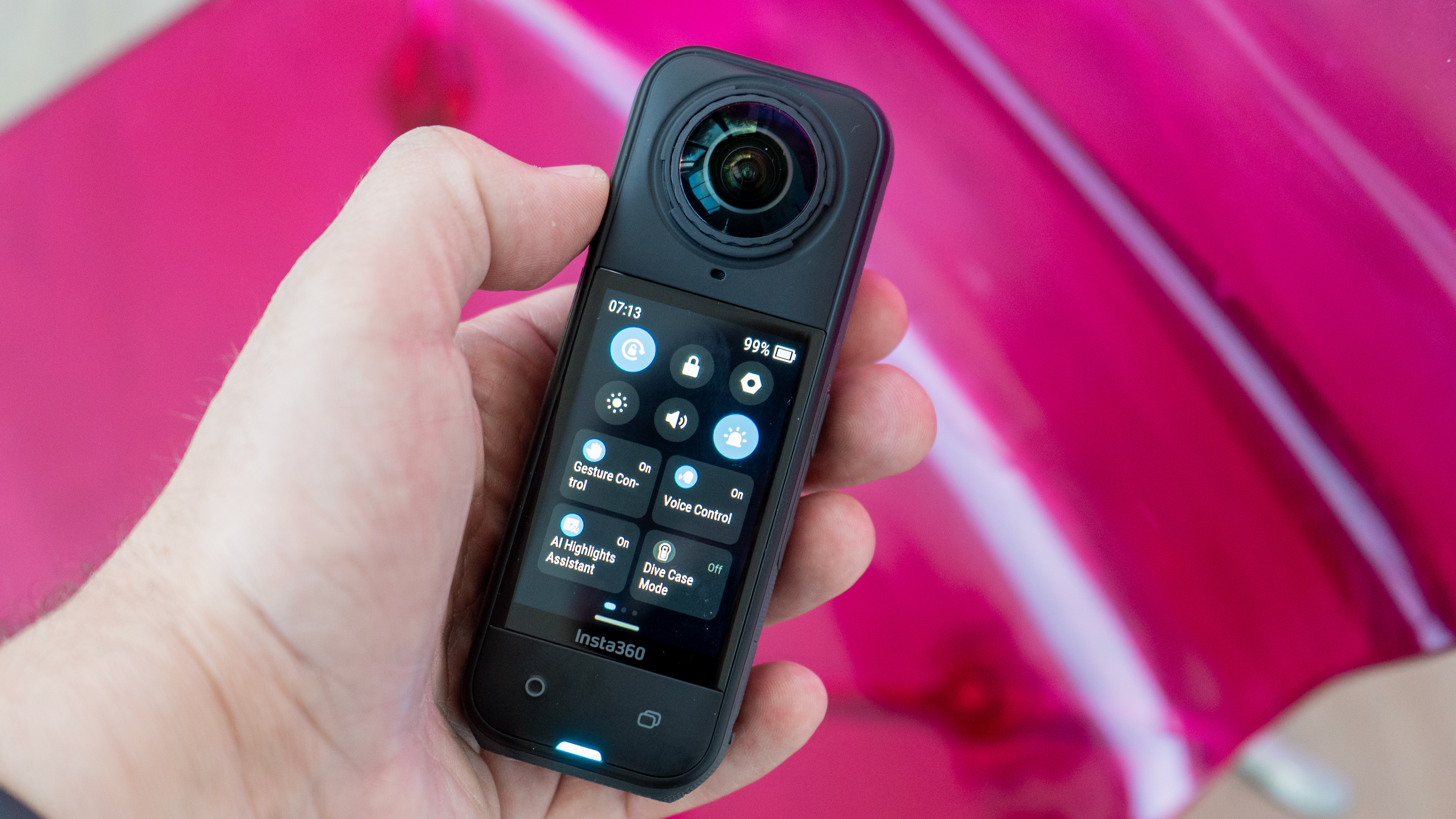
Incidentally, Insta360 offer several mounting options – my personal favourite, as a cyclist, is the pole which lets you float a camera magically infront of your handlebars, but that's a whole other story.
Camera controls are via the 'rear' – the shutter is beneath the touchscreen. There is also the option to use surprisingly effective gesture controls, including not just the now commonplace 'palm' and 'peace sign' but a simple 'twist' of the camera. Smart.
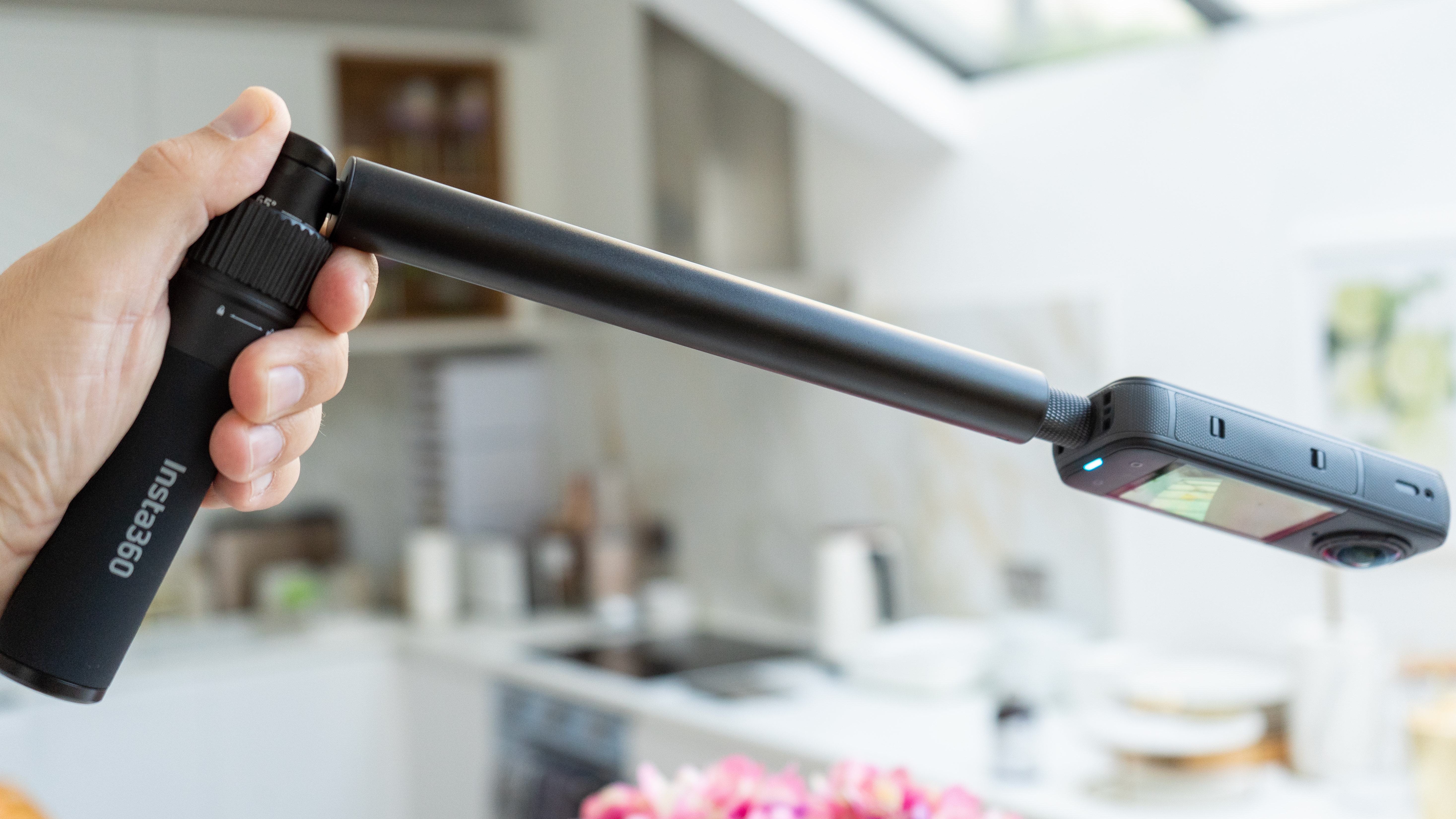
Insta360 has gone back to the drawing board and created a new 'Bullet Time Selfie Stick 2.0' released alongside this camera. I've taken shots with the Insta360 X3 and X4 using the previous version of this – the idea is you swing the camera around yourself at around 1 rotation a second and the software does the rest to make it seem like you're in The Matrix (or, younger folks, just on pause in a video game world).
It works by pulling the 'selfie stick' section from the thicker grip, then folding it at the joint. Other than just feeling a little more natural as a standard 'selfie stick' because it's fully round. The crucial improvement with this model is that the new locking system (between my thumb and forefinger in the photo) can be popped into different angles between 65˚ and 90˚ which is enough to make using the thing feel a lot safer than its right-angled predecessor. Since it extends to a full 47.5 inches (1.2m) and you're meant to turn it at about one revolution a second, that's a reassuring improvement (and I say that as fan, if occasionally a nervous one, of the old one too!)
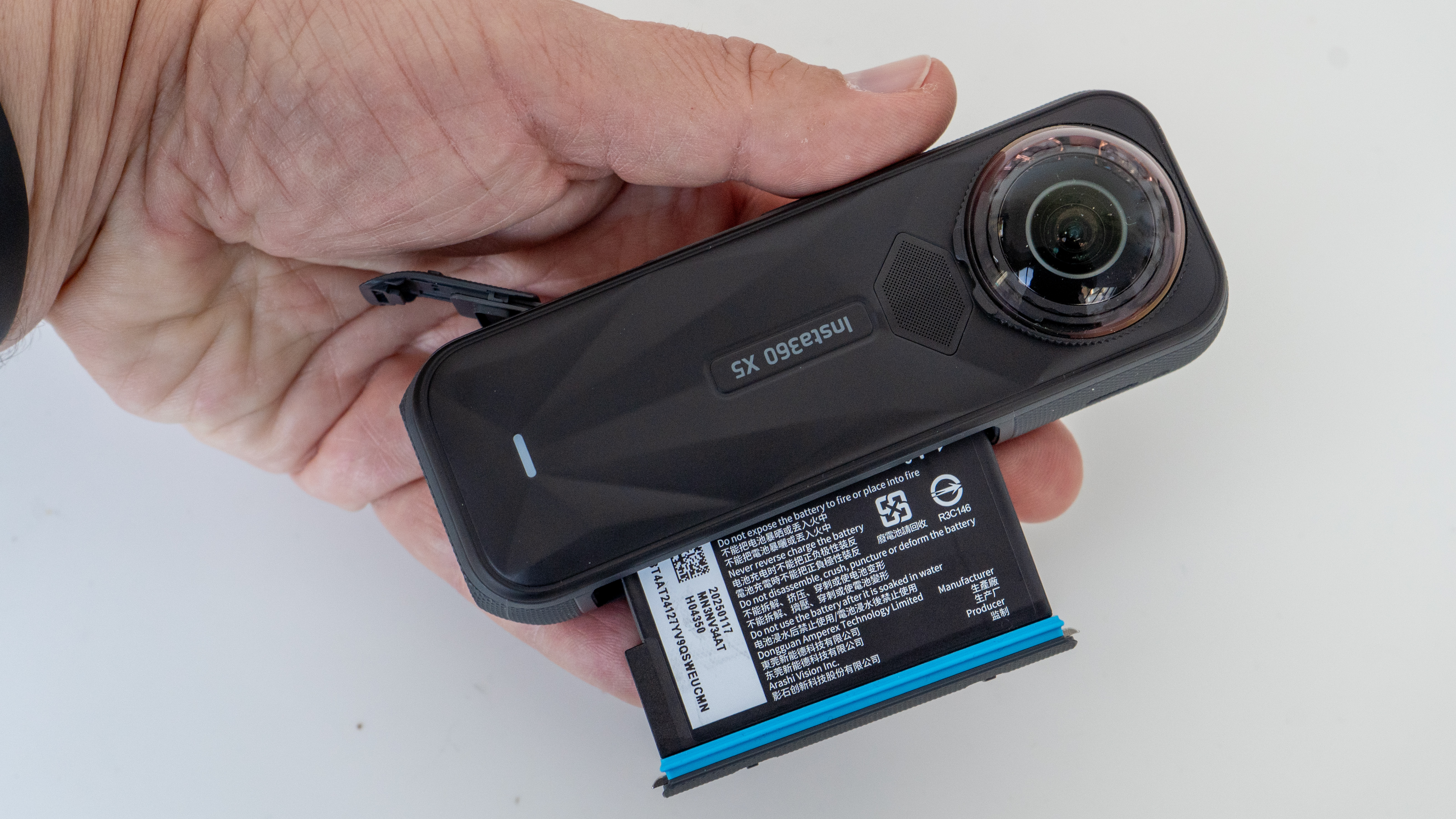
On the 'invisible improvements' list, Insta360 has addressed the battery, promising up to 185 minutes in Endurance mode. I wasn't (quite) able to get that, but it was very apparent that the charging was faster – theoretically about 20 minutes to get over 80%.
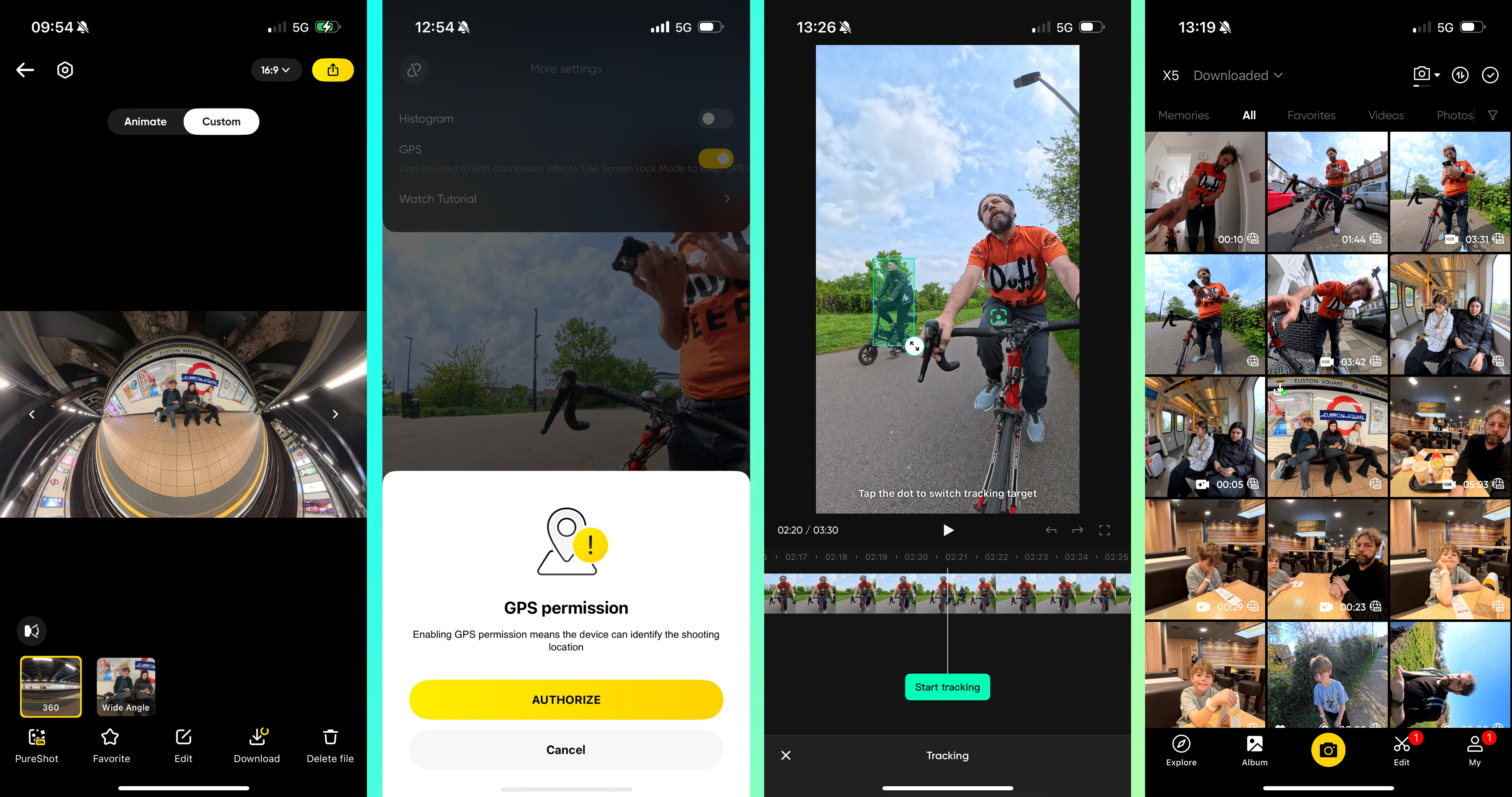
The app has seen extensive improvements (though there were a few features, like GPS overlay, I couldn't immediately locate as a user of the old one).
Impressive tools are the ability to track subjects and to make complete AI video edits from, for example, a cycle ride.
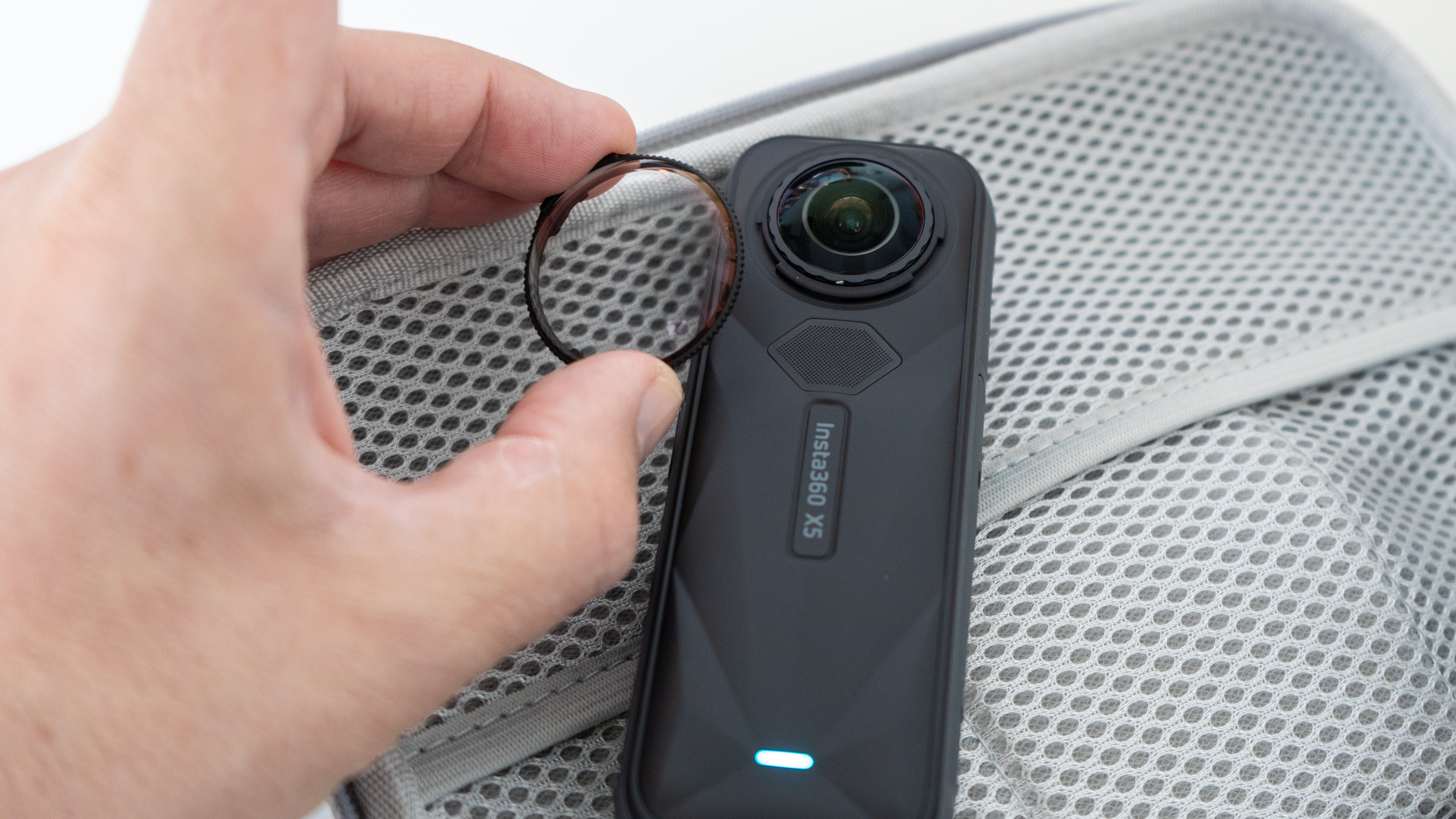
The lens guards are an innovation from the X4, and the X5 versions work brilliantly. The much more significant improvement here, however, is that the lens beneath is not only made of tougher glass but replaceable too – without needing to be sent back to Insta360. Instructions are provided in the pack. I'm sorry to say I didn't break mine yet, so I've not yet hat to replace them – and that is despite a one meter drop test onto a hard floor!
Insta360 X5: Performance
I think it's fair to say that for the first time in a consumer 360-degree camera the camera performance is truly good. Detail is visible and, more importantly, detail is picked up across light and dark areas even where the light isn't great.
That's significant because it means you could think about using the camera as you only action camera (you can use it in single camera mode) without being disappointed, which makes it a much better value proposition than in the past.

In wider terms the camera's performance gave me no issues. Menus were responsive, and the extra processing power is clearly available and used to make navigating menus more responsive as well as help produce better images. The camera also powers up in only about 4 seconds, even from a fresh battery insert, which is a lot better than some action cams, let alone 360-degree devices.
Low light is the big beneficary of the extra processing ooompf though, with the option of the 'PureVideo' mode. This is chosen separately in the menu, though personally I was often pretty happy with the way the camera handled lower-light scenarios in the standard mode.
I'd suggest first-time users spend a little time exploring the system because there are a lot of choices in each mode, similar to any action camera.

Things are still not perfect. In the 72 megapixel still images I was barely able to discern the join between the two fish-eye cameras, but when reviewing the video footage I took when cycling it you can see some evidence of that in the cycling clips just below my left arm.
Still, this auto-generated edit is pretty cool, and it's only very detailed areas where you see the slightest issue and even then it only looks like a compression artefact.

Overall Verdict
The Insta360 X5 holds very firmly onto the 360-degree camera crown, that's for certain. This is an excellent device and it has only got better while the competition has offered nothing (except promises, of course).
Looking at pictures taken indoors – even on the London Underground – the camera copes significantly better in low light, while the Dolby video I caught with my cycling mount is impressively engaging.
Whether there is enough by way of improvement to tempt me to dip my hand into my pocket as an X4 user is another matter; the X4 already brought 8K and lens protectors to the table so, personally, I think I might keep my hand in my pocket. The X4 also included them in the Standard Bundle (but that was before the tariff war).
That said, the 60fps option at 5.7K looks great too and the camera doesn't get as warm as fast – that might justify the investment. Similarly, the better low light is very notable so, if I was doing more pro work, I'd be tempted.
If, however, I still had the X3 (and certainly if I had any other 5.7K alternative – yes, I'm looking at the GoPro!) then I think that – for a serious user – there is enough here to make the jump. That's why I've awarded 4.5 stars to a camera much better than last year's 5-star device. Because some more causal X4 users won't need the upgrade.
For everyone else, this is easily the best 360-degree camera out there.
Alternatives
1 Minute Test
@digitalcameraworld ♬ original sound - DigitalCameraWorld
My experience
I have been shooting with 360-degree cameras for years, having tried more than ten different models on hundreds of shoots. I don't just do it for reviews, but because I enjoy it. I'm especially familiar with the Insta360 series, and the software required to turn 360-degree images into traditional image or viewable video – a critical part of the experience in my view. As a professional drone operator, and the expert behind the best camera drone guide, I have also used 360-degree cameras as an alternative when regulations prevented flying.







